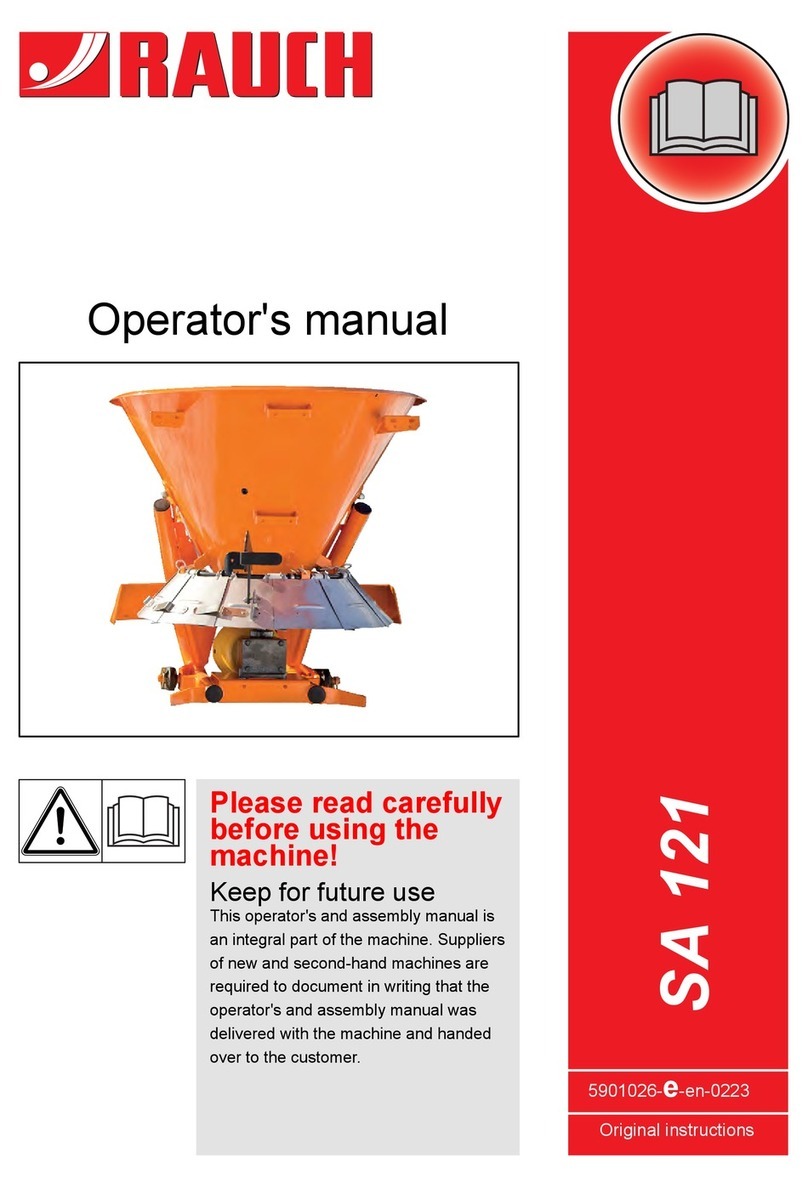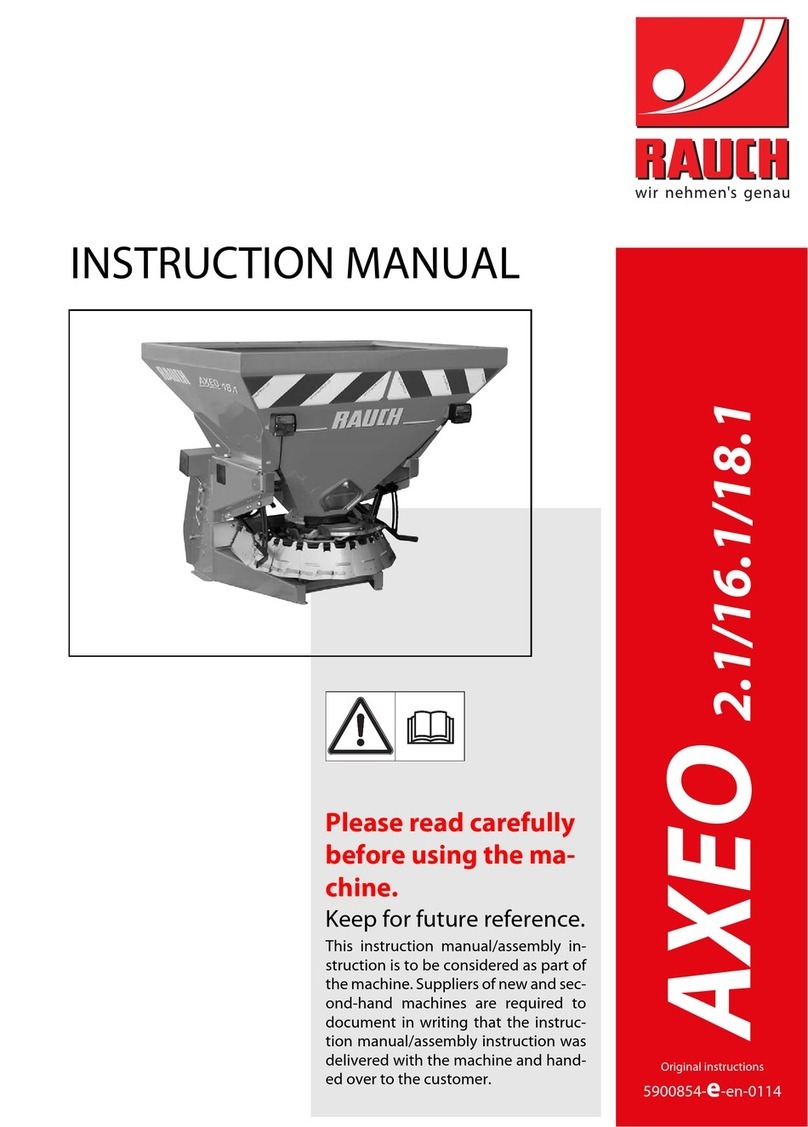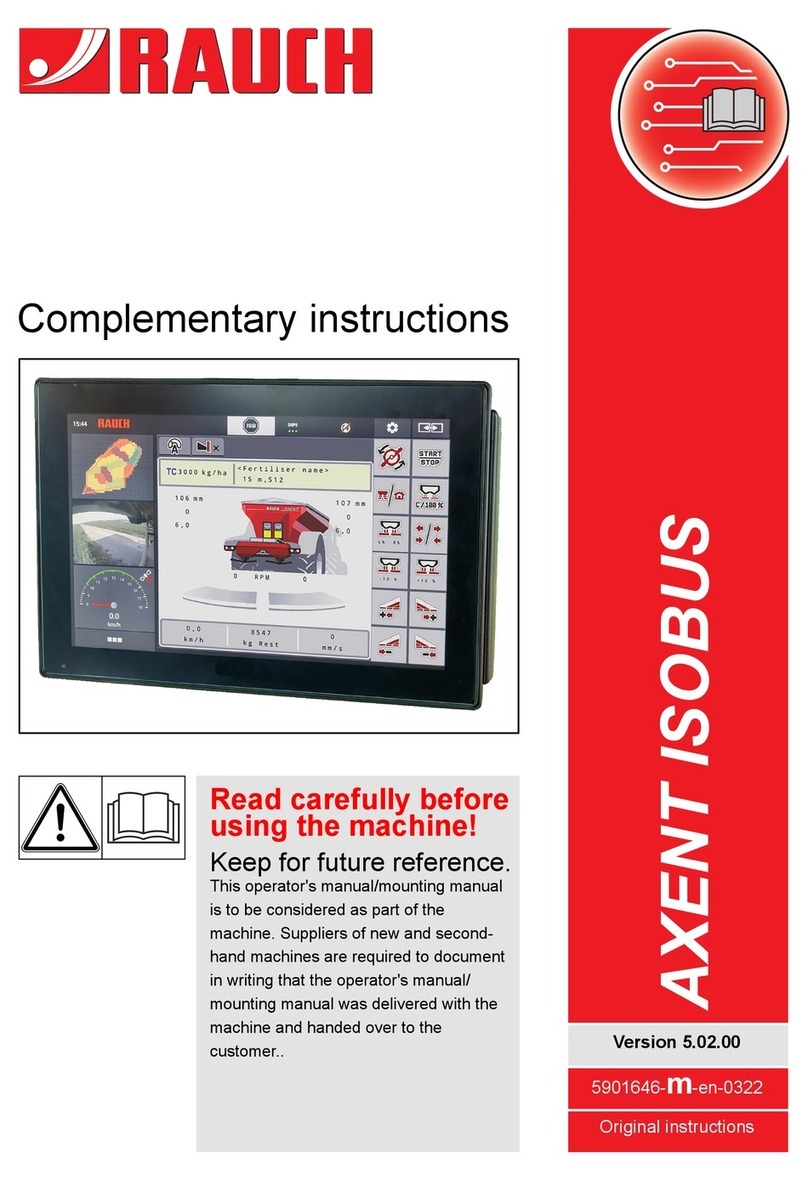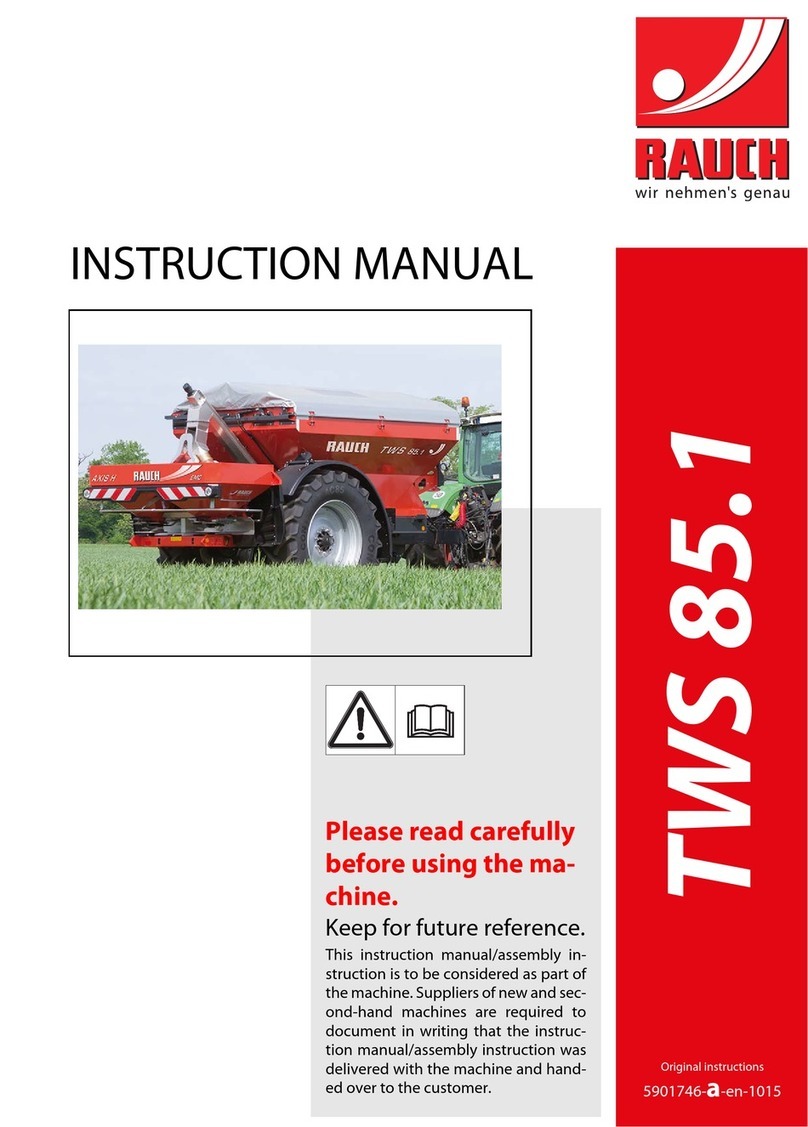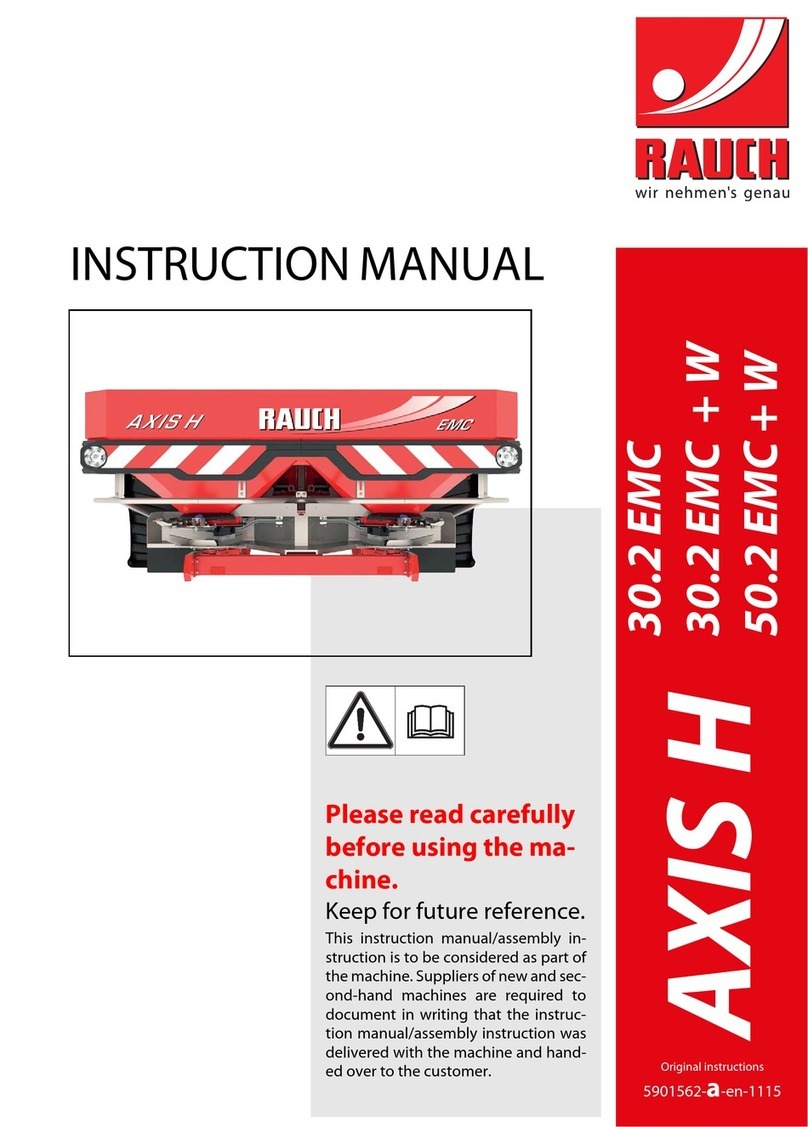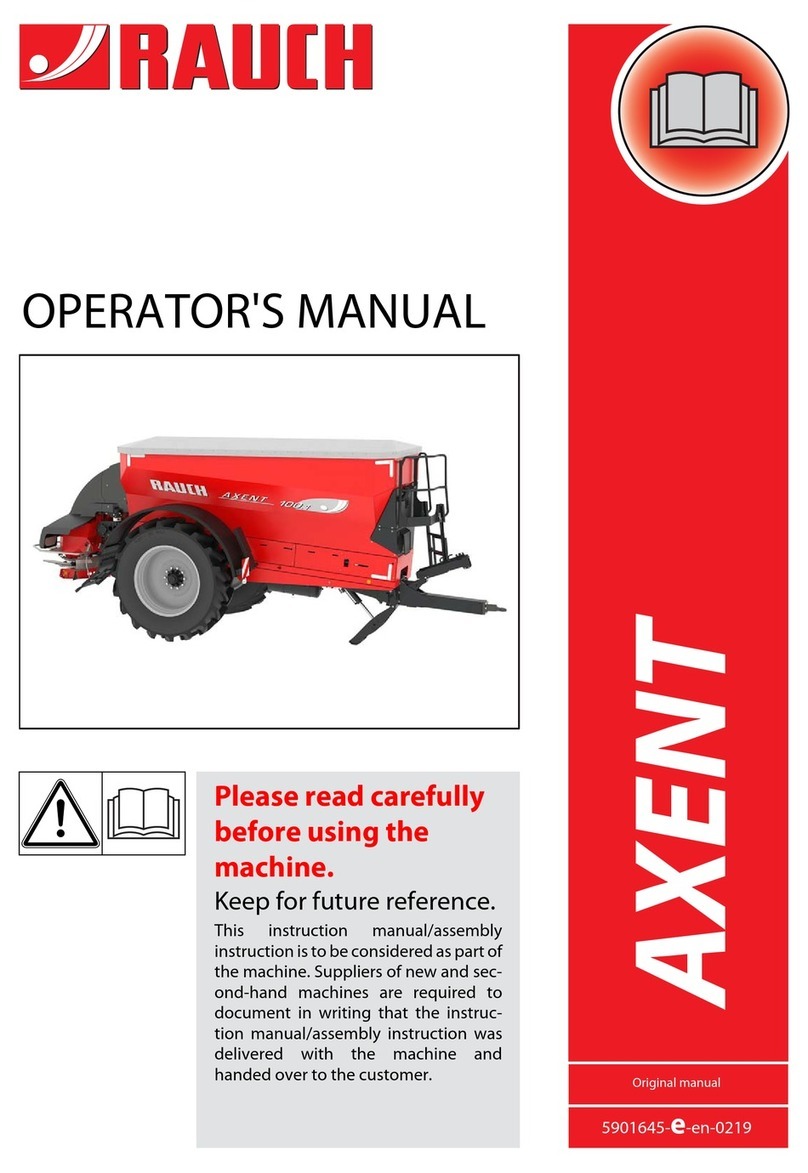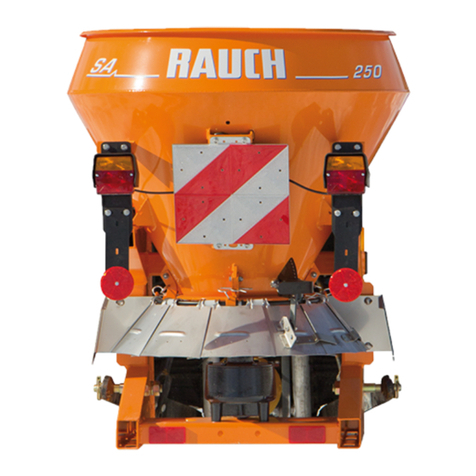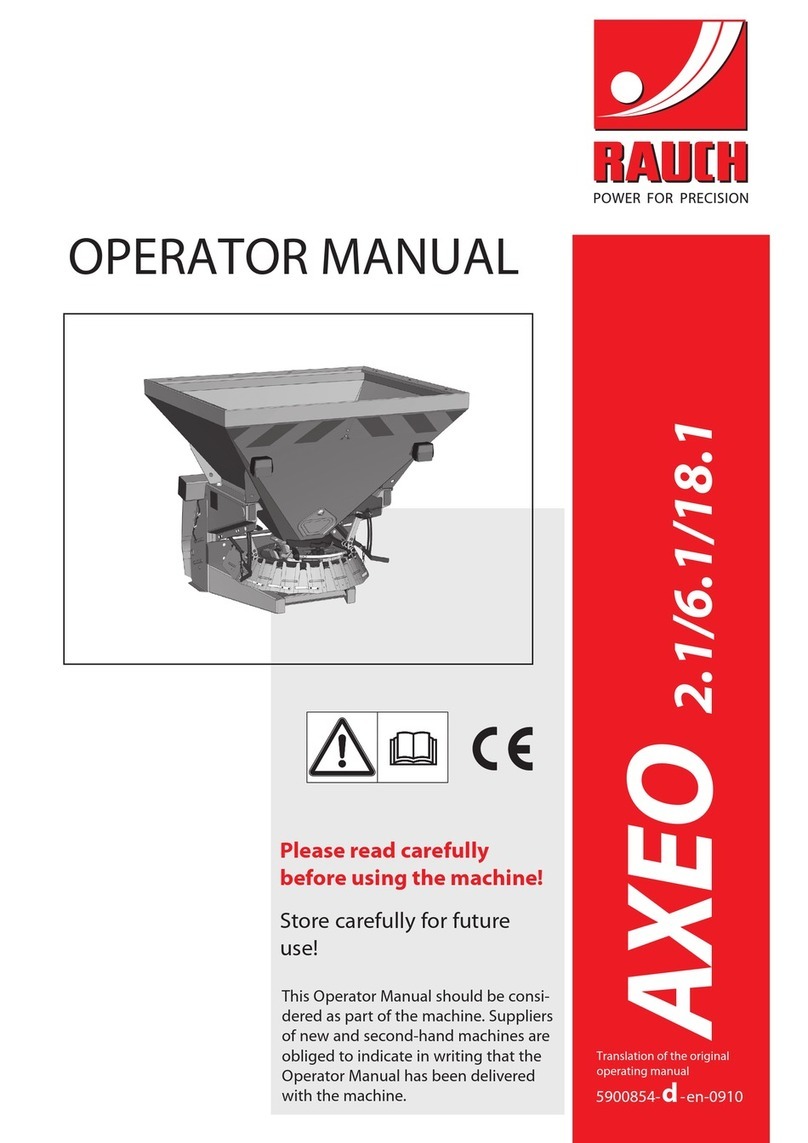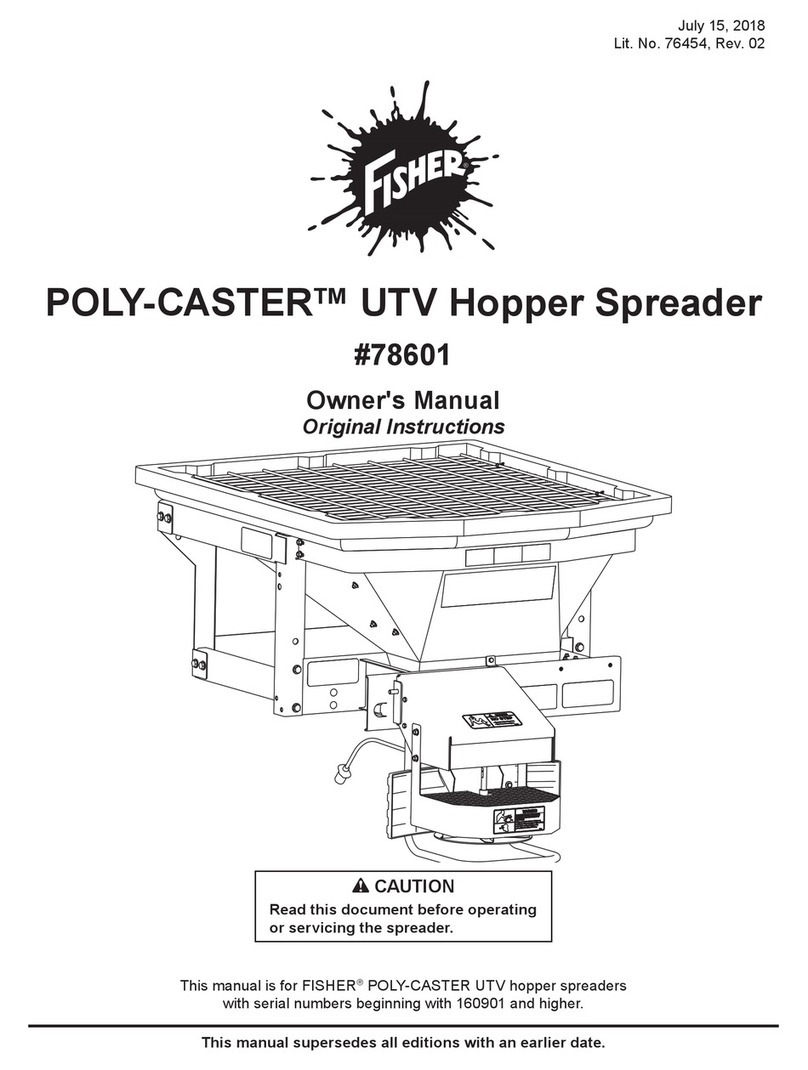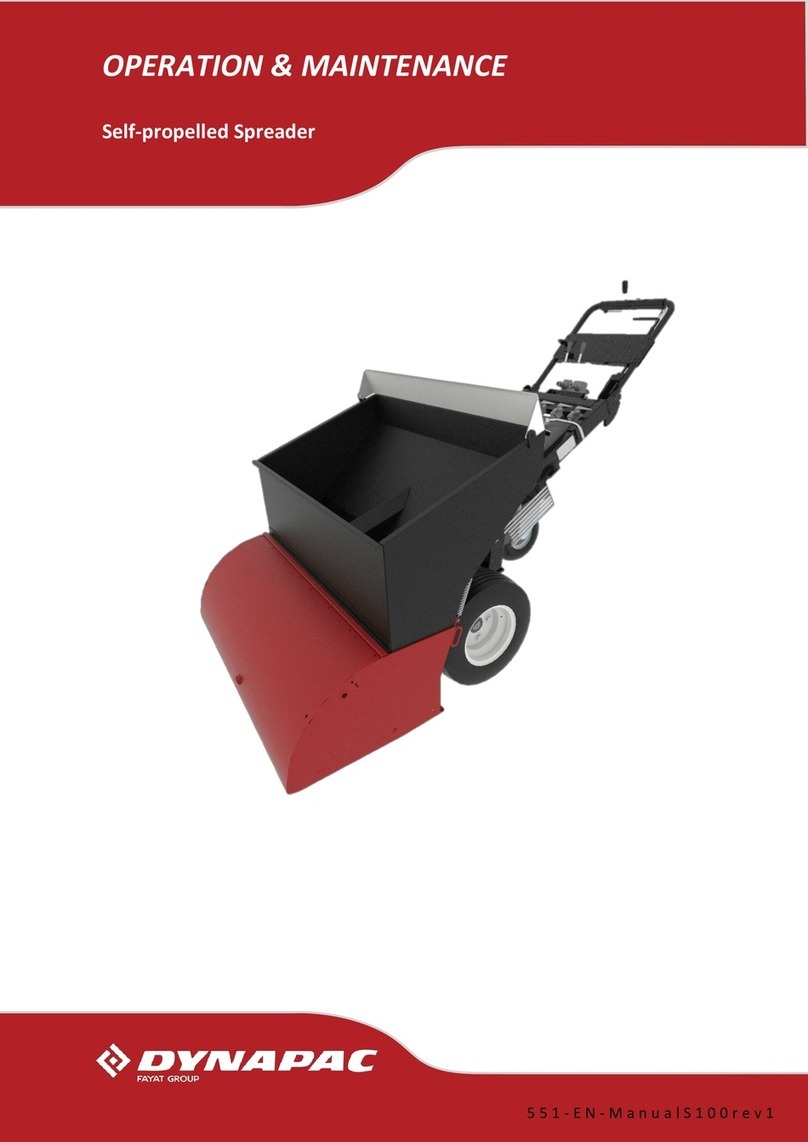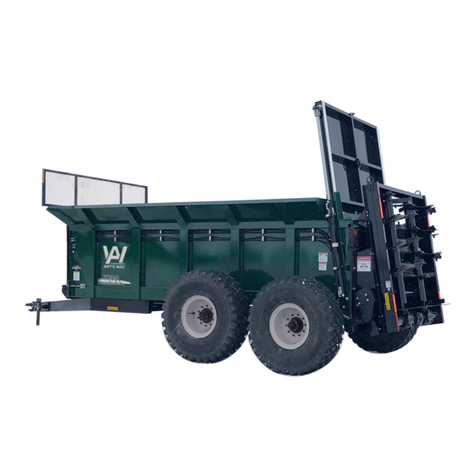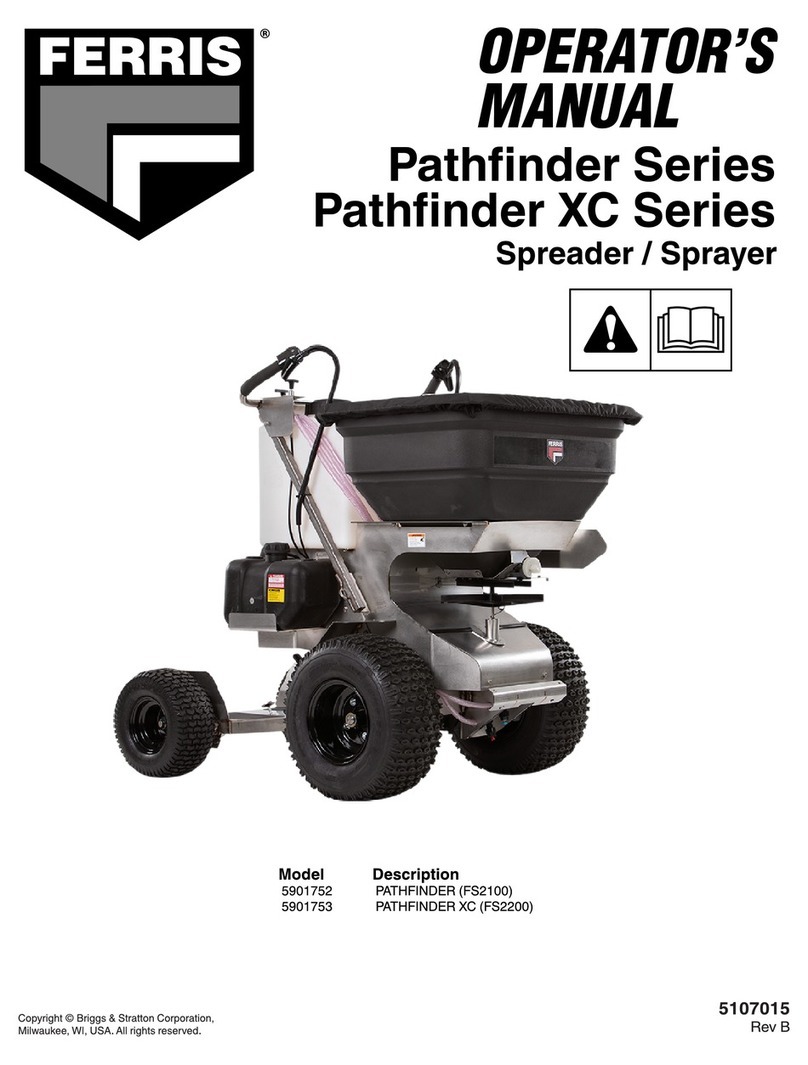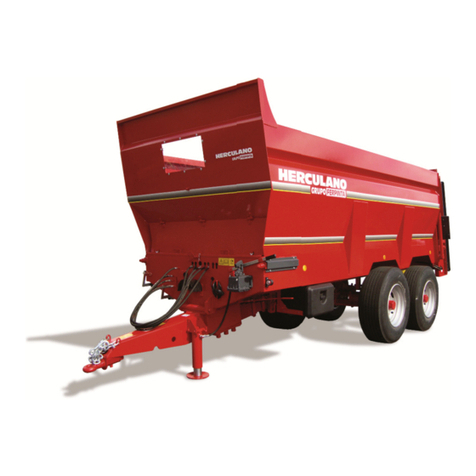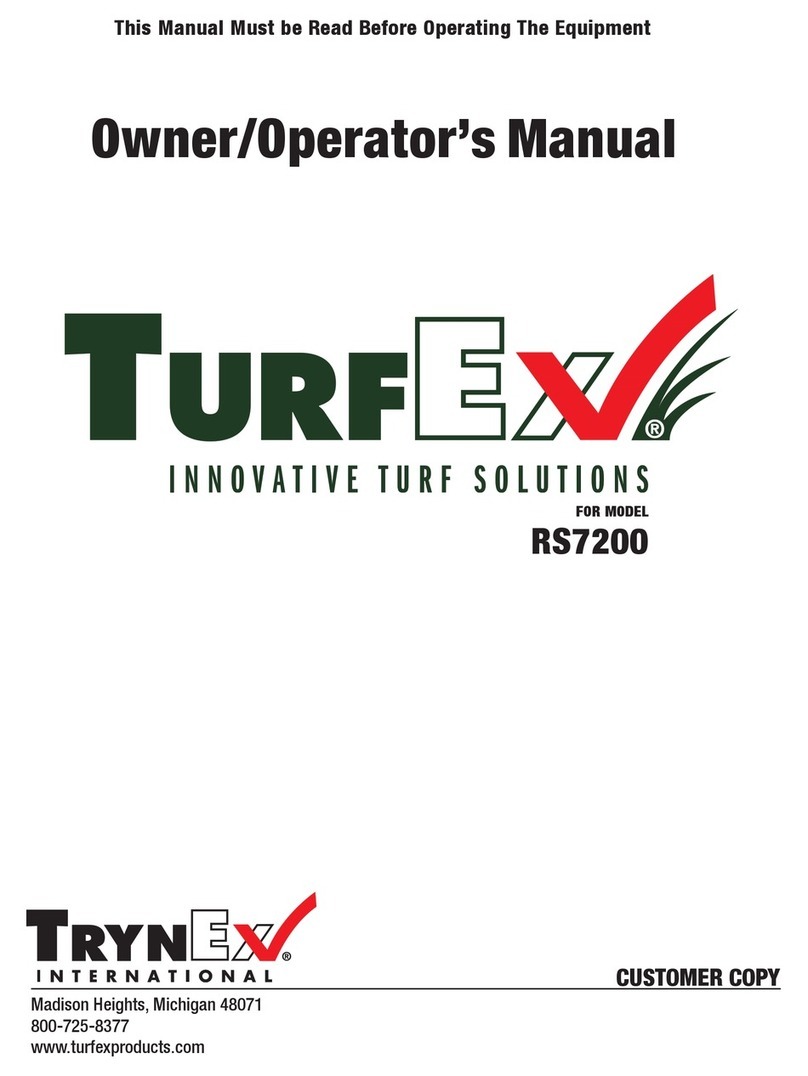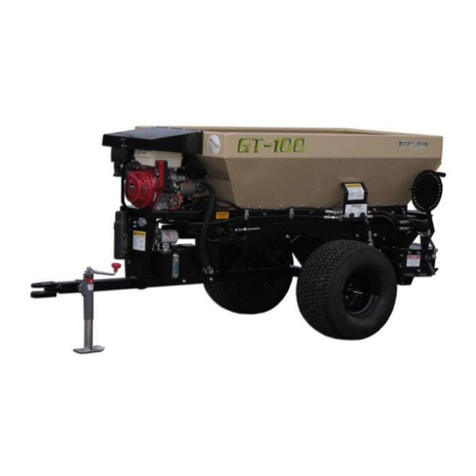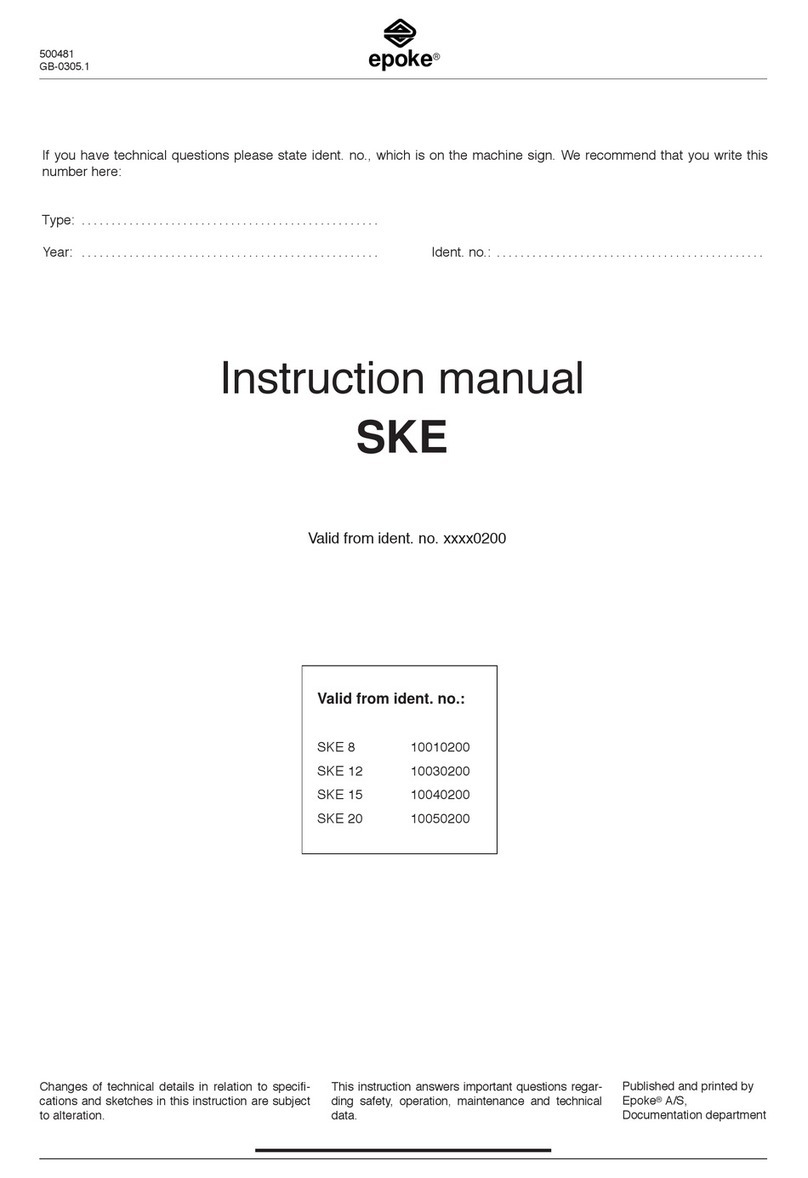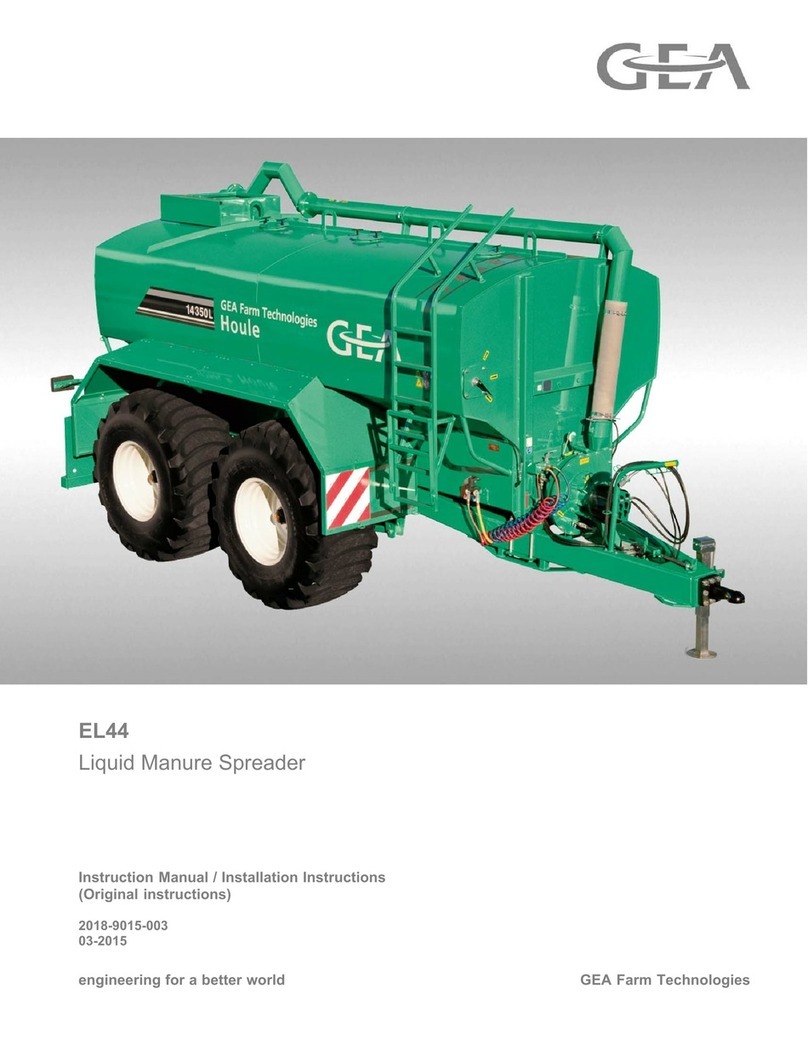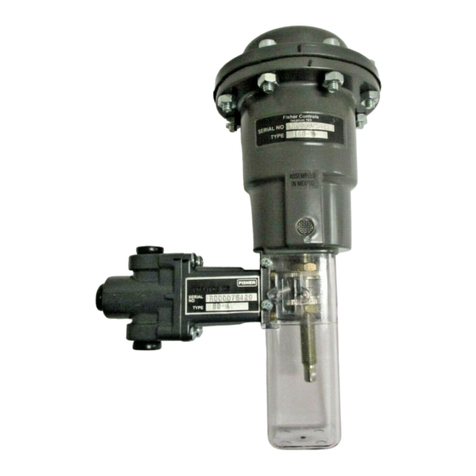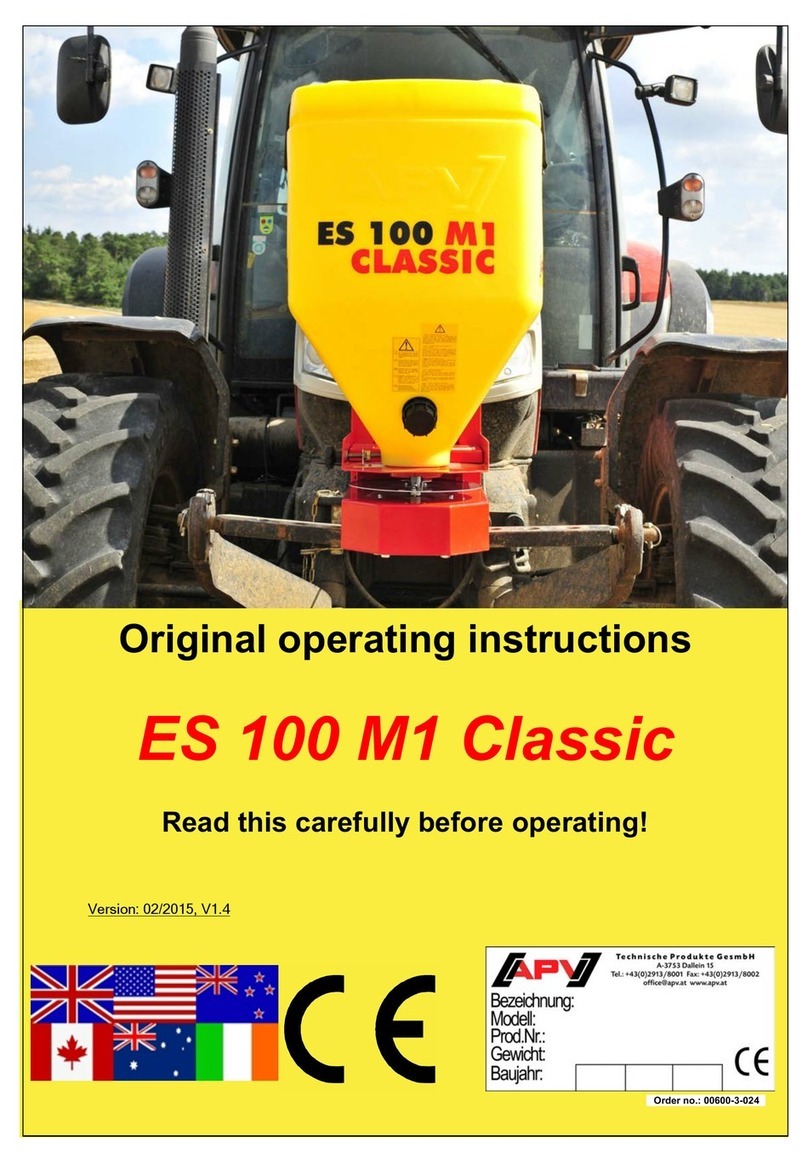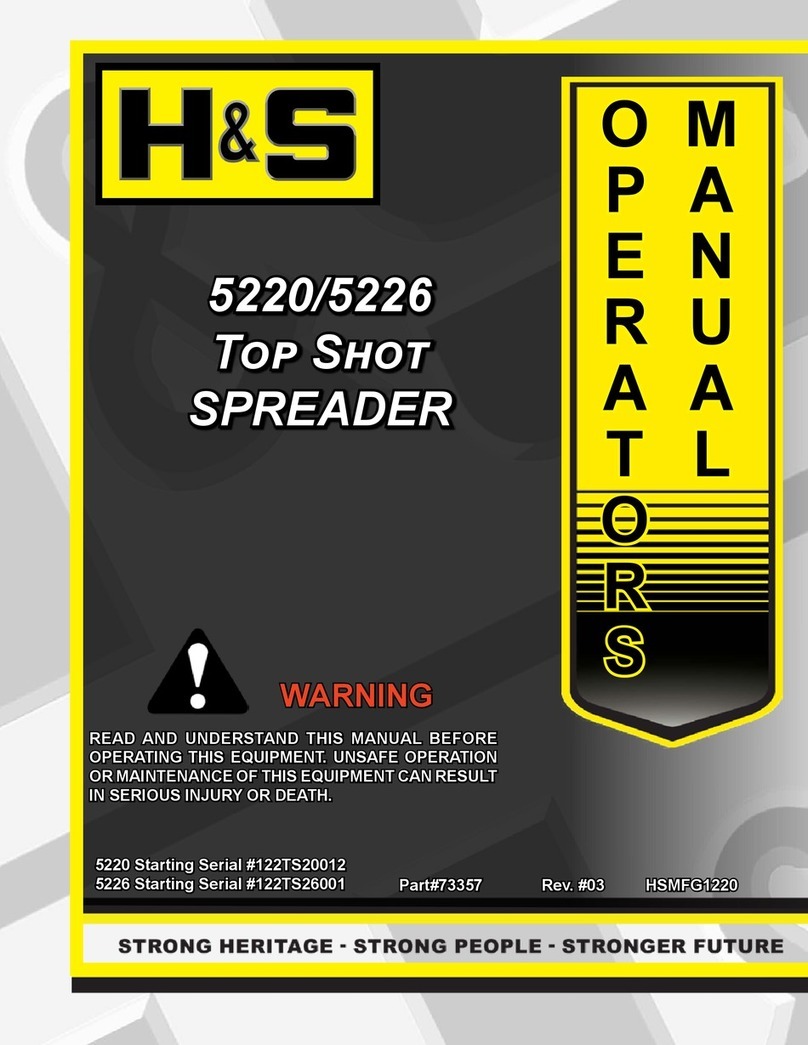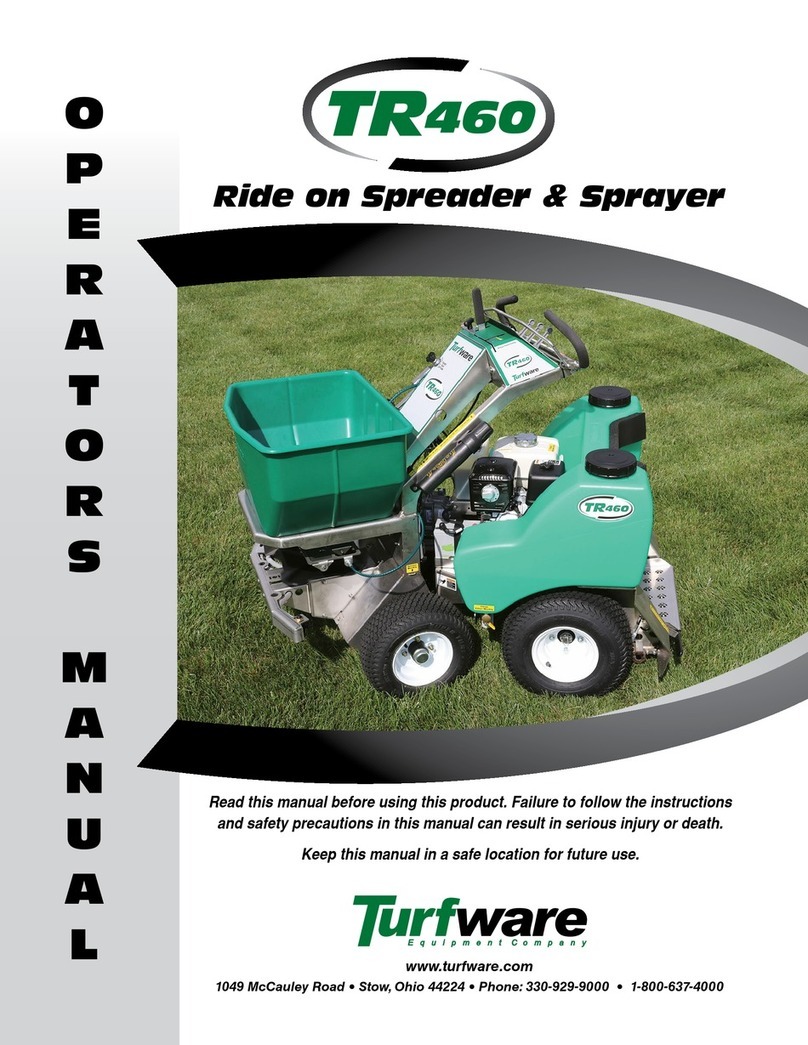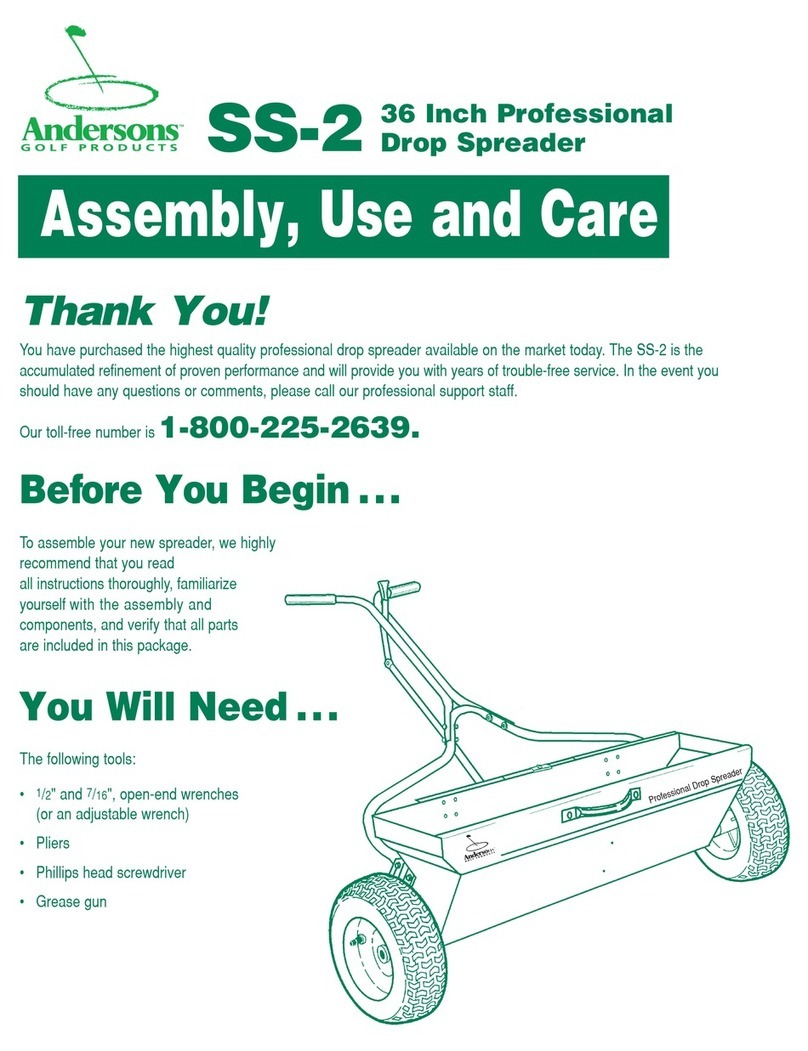
Table of Contents
II
4 Technical data 23
4.1 Manufacturer . . . . . . . . . . . . . . . . . . . . . . . . . . . . . . . . . . . . . . . . . . . . . . . . . . . . 23
4.2 Description of the machine . . . . . . . . . . . . . . . . . . . . . . . . . . . . . . . . . . . . . . . . . 23
4.2.1 Assembly overview . . . . . . . . . . . . . . . . . . . . . . . . . . . . . . . . . . . . . . . . . .24
4.2.2 Agitator. . . . . . . . . . . . . . . . . . . . . . . . . . . . . . . . . . . . . . . . . . . . . . . . . . . .25
4.3 Machine data . . . . . . . . . . . . . . . . . . . . . . . . . . . . . . . . . . . . . . . . . . . . . . . . . . . . 26
4.3.1 Versions . . . . . . . . . . . . . . . . . . . . . . . . . . . . . . . . . . . . . . . . . . . . . . . . . . .26
4.3.2 Technical data of basic equipment . . . . . . . . . . . . . . . . . . . . . . . . . . . . . .27
4.3.3 Technical data of the extensions . . . . . . . . . . . . . . . . . . . . . . . . . . . . . . . .28
4.4 List of available accessories . . . . . . . . . . . . . . . . . . . . . . . . . . . . . . . . . . . . . . . . 29
4.4.1 Extensions . . . . . . . . . . . . . . . . . . . . . . . . . . . . . . . . . . . . . . . . . . . . . . . . .29
4.4.2 Hopper cover . . . . . . . . . . . . . . . . . . . . . . . . . . . . . . . . . . . . . . . . . . . . . . .29
4.4.3 RFZ 7 (all versions except MDS 8.2) . . . . . . . . . . . . . . . . . . . . . . . . . . . . .29
4.4.4 TELIMAT T1. . . . . . . . . . . . . . . . . . . . . . . . . . . . . . . . . . . . . . . . . . . . . . . .29
4.4.5 Two-way unit . . . . . . . . . . . . . . . . . . . . . . . . . . . . . . . . . . . . . . . . . . . . . . .30
4.4.6 Tele-Space drive shaft . . . . . . . . . . . . . . . . . . . . . . . . . . . . . . . . . . . . . . . .30
4.4.7 Auxiliary lighting . . . . . . . . . . . . . . . . . . . . . . . . . . . . . . . . . . . . . . . . . . . . .30
4.4.8 Row spreading device RV 2M1 for hops and fruit cultivation. . . . . . . . . . .30
4.4.9 Limited border spreading unit GSE 7. . . . . . . . . . . . . . . . . . . . . . . . . . . . .31
4.4.10 Hydraulic remote control FHZ 10 . . . . . . . . . . . . . . . . . . . . . . . . . . . . . . . .31
4.4.11 Agitator RWK 6 . . . . . . . . . . . . . . . . . . . . . . . . . . . . . . . . . . . . . . . . . . . . .31
4.4.12 Agitator RWK 7 . . . . . . . . . . . . . . . . . . . . . . . . . . . . . . . . . . . . . . . . . . . . .31
4.4.13 Agitator RWK 15 . . . . . . . . . . . . . . . . . . . . . . . . . . . . . . . . . . . . . . . . . . . .31
4.4.14 Practice test kit PPS5 . . . . . . . . . . . . . . . . . . . . . . . . . . . . . . . . . . . . . . . .31
4.4.15 Fertiliser identification system (DIS) . . . . . . . . . . . . . . . . . . . . . . . . . . . . .31
5 Axle load calculation 33
6 Transportation without tractor 37
6.1 General safety instructions . . . . . . . . . . . . . . . . . . . . . . . . . . . . . . . . . . . . . . . . . 37
6.2 Loading and unloading, parking. . . . . . . . . . . . . . . . . . . . . . . . . . . . . . . . . . . . . . 37
7 Commissioning 39
7.1 Accepting the machine . . . . . . . . . . . . . . . . . . . . . . . . . . . . . . . . . . . . . . . . . . . . 39
7.2 Tractor requirements . . . . . . . . . . . . . . . . . . . . . . . . . . . . . . . . . . . . . . . . . . . . . . 39
7.3 Mounting the drive shaft onto the machine . . . . . . . . . . . . . . . . . . . . . . . . . . . . . 40
7.4 Installing the machine on the tractor . . . . . . . . . . . . . . . . . . . . . . . . . . . . . . . . . . 43
7.4.1 Requirements. . . . . . . . . . . . . . . . . . . . . . . . . . . . . . . . . . . . . . . . . . . . . . .43
7.4.2 Attachment. . . . . . . . . . . . . . . . . . . . . . . . . . . . . . . . . . . . . . . . . . . . . . . . .44
7.5 Presetting the mounting height . . . . . . . . . . . . . . . . . . . . . . . . . . . . . . . . . . . . . . 47
7.5.1 Safety. . . . . . . . . . . . . . . . . . . . . . . . . . . . . . . . . . . . . . . . . . . . . . . . . . . . .47
7.5.2 Maximum admissible mounting height at front (V) and rear (H). . . . . . . . .48
7.5.3 Mounting heights A and B according to fertiliser chart. . . . . . . . . . . . . . . .49
7.6 Connecting the metering slide actuator . . . . . . . . . . . . . . . . . . . . . . . . . . . . . . . . 53
7.6.1 Connecting the hydraulic slide actuators: Versions K/R/D. . . . . . . . . . . . .53
7.6.2 Connecting the electronic slide actuators: Version C . . . . . . . . . . . . . . . .55
7.6.3 Connecting the electronic metering slide actuator: Version Q . . . . . . . . . .55
7.7 Filling the machine. . . . . . . . . . . . . . . . . . . . . . . . . . . . . . . . . . . . . . . . . . . . . . . . 56
7.8 Parking and unhitching the machine . . . . . . . . . . . . . . . . . . . . . . . . . . . . . . . . . . 57

